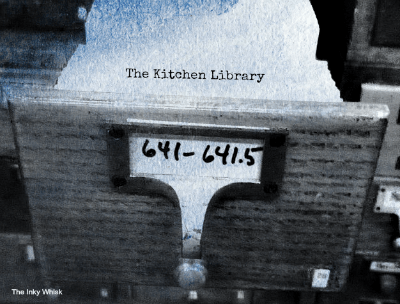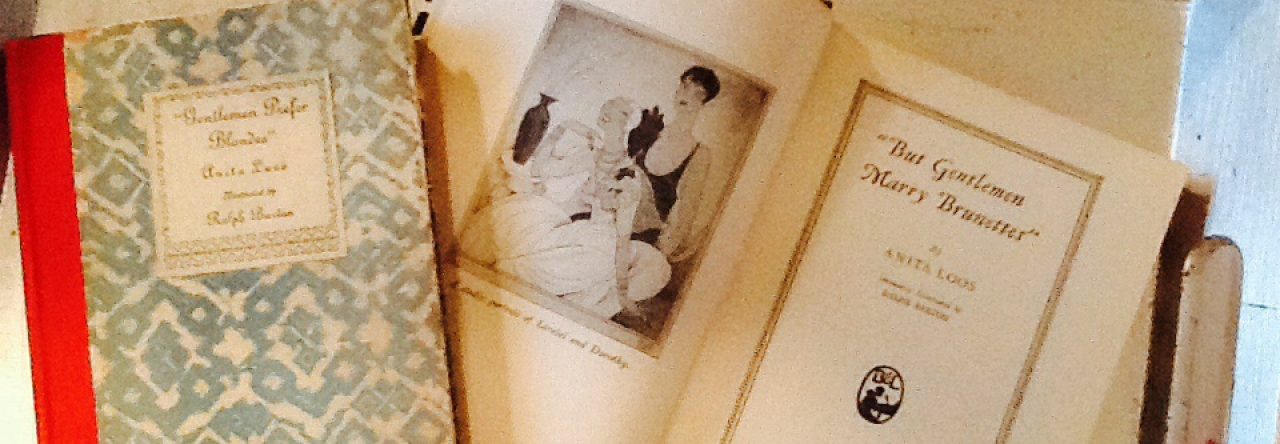
Even if you have shelves of cookbooks there is one that you reach for first. One that among the stacks of recipe cards, magazine pull-outs, and Pinterest boards is a stalwart you turn to for roasting times, béchamel, or icing. Mine is The Boston Cooking School Cookbook by Fannie Merritt Farmer.
My mother used an edition from the 1940s that was her mother’s. She loved it so much that when the family dog, who had good taste in cookbooks, chewed the cover (along with a few others – the cookbooks moved much higher on the shelf after that incident) my father had it restored. When I moved out she found me my own copy, a 1937 edition. I later added a second 1924 edition, found at an antique mall.
You can get more recent editions of Fannie Farmer. What has always delighted me about these older  editions is the staggering variety of everything. And the names! The sauces alone are amazing – Roberts sauce, Victor Hugo sauce, Finistre sauce. There are 11 variations on the basic white sauce from Brown Almond, to Celery, to Truffle. Does the basic Velouté sauce make you sigh with boredom? Try Poulette (add egg yolk, mushroom liquor, and lemon juice), or Russian (add chives, prepared mustard, horseradish, and lemon juice.)
editions is the staggering variety of everything. And the names! The sauces alone are amazing – Roberts sauce, Victor Hugo sauce, Finistre sauce. There are 11 variations on the basic white sauce from Brown Almond, to Celery, to Truffle. Does the basic Velouté sauce make you sigh with boredom? Try Poulette (add egg yolk, mushroom liquor, and lemon juice), or Russian (add chives, prepared mustard, horseradish, and lemon juice.)
Food trends of the last 30 years you might think sprang out of nowhere, ingredients saved from obscurity and brought into the mainstream, seasonings you can only imagine were too obscure for the bland cookery of the early 20th century U.S. – you will find them here: twice-baked potatoes, iced coffee and frappes, almond macaroons, Swiss Chard, Tabasco sauce, and mango chutney. You won’t find a lot of authentic international cuisine (“Spaghetti with Hamburg” anyone?) beyond the popular continental cuisine of the time, but you will find a huge range of plain and fancy – from humble Salisbury Steak to Lobster Delmonico.
It is an impressive 772 pages, with an extensive two-column index that brings the page count up to a whopping 838. Fannie’s contribution to cooking was precision and consistency and her mission was to standardize cooking measurements, times, and temperatures to help home cooks find success. The Boston Cooking School Cook Book was a handbook for successful kitchen management, food shopping navigation, and entertaining. Not to mention, it explains how to store your homemade ice cream in a “mechanical refrigerator.”
If you want basic instructions on how to truss a chicken, you, the modern cook, will want to skip over the part where you singe off the hairs and down, pull the pinfeathers (after you remove the head), remove the feet and pull out the entrails and giblets (mind the gallbladder! Breaking it will make everything around it taste of bile.) Can all this be done at the market? Well, yes, but you should check carefully to make sure it is done properly. Besides “it is the practice of marketmen to cut a gash through the skin to reach crop and windpipe more easily. This gash must be sewed before stuffing and causes the bird to look less attractive when cooked.” My, my. We wouldn’t want that, now, would we?
The book opens with the basics of menu making, encouraging experimentation, urging simplicity and reassuring that “there are no unbreakable rules for menu making.” Nutrition is also dealt with in a relax-you-will-do-fine manner noting that the “necessary vitamins will be provided automatically if the so-called protective foods appear regularly on the marketing list.” A guide to entertaining follows with guidance to dinner parties, children’s parties, luncheons, a formal tea and, my favorite, how to put together a proper breakfast tray (include flowers and don’t forget the morning paper.)
 If you like sweets this book has every cake, pastry, cookie, and dessert under the sun. Cakes have names of mysterious origin – Mrs. Raymond’s Gold Cake, Prize Cake, Election Cake, Grant Cake. Lord and Lady Baltimore’s cakes are in here. Lightning cake, Sunshine cake, maple fudge, and Lemon Queens.
If you like sweets this book has every cake, pastry, cookie, and dessert under the sun. Cakes have names of mysterious origin – Mrs. Raymond’s Gold Cake, Prize Cake, Election Cake, Grant Cake. Lord and Lady Baltimore’s cakes are in here. Lightning cake, Sunshine cake, maple fudge, and Lemon Queens.
I am a so-so baker with not much of a sweet tooth so the recipe I turn to when I need to make a simple dessert for company is Apple Pan Dowdy (pictured left), an easy variation on an easy and plain cake, the Cottage Pudding.
So that was a long walk through a favorite cookbook! What is your go-to basic cookbook? Or a vintage cookbook you love to wander through for ideas or just to be a little sentimental about the people in your life who once cooked for you?
Linking up with Beth Fish Reads for Weekend Cooking.

mae
Your review is most enjoyable. I’ve read histories of Fannie Farmer but not this much about the recipes!
best… mae at maefood.blogspot.com
Beth F
I have my mom’s copy from the 40s and one I bought at a used bookstore that’s maybe from the 70s? (I don’t remember and I’m too lazy to check.) That cookbook includes recipes and techniques that you can’t find anywhere else.
inkywhisk
It’s definitely a keeper!